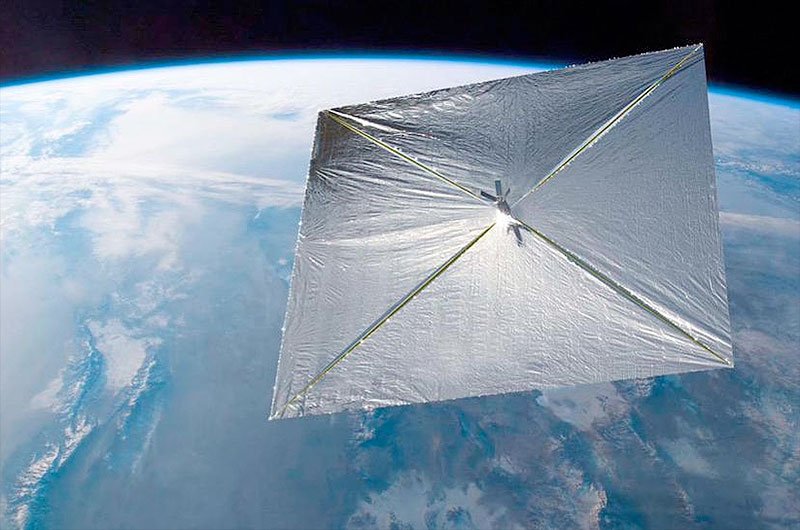
A tiny solar-sailing spacecraft has gone silent in Earth orbit, apparently victimized by a software glitch.
LightSail, a CubeSat designed and built by the nonprofit Planetary Society, stopped beaming data home on Friday (May 22), just two days after it blasted off along with the United States Air Force's robotic X-37B space plane.
"LightSail is likley now frozen, not unlike the way a desktop computer suddenly stops responding," The Planetary Society's Jason Davis wrote in a mission update Tuesday (May 26). [Photos: Solar Sail Evolution for Space Travel]
The cause of the problem seems to lie with LightSail's flight software, Davis added. The spacecraft, which is about the size of a loaf of bread, was designed to beam telemetry data home in a "beacon packet" every 15 seconds. As this happens, the software writes corresponding information to an onboard file.
"As more beacons are transmitted, the file grows in size," Davis wrote in the update. "When it reaches 32 megabytes — roughly the size of 10 compressed music files — it can crash the flight system. The manufacturer of the avionics board corrected this glitch in later software revisions. But alas, LightSail's software version doesn't include the update."
Engineers have come up with a fix for the software problem, but they're unable to upload the patch to LightSail because the spacecraft is unresponsive at the moment, Davis added. So rebooting the CubeSat appears to be the only way to save it.
LightSail's operators have tried rebooting the craft multiple times since they became aware of the problem, but none of the commands have worked. The team may therefore have to wait for a fast-moving charged particle to strike LightSail's electronics in just the right way, Davis wrote. Such "natural reboots" tend to happen to CubeSats after just a few weeks in orbit, so there's hope for LightSail yet: The spacecraft can likely stay aloft in its current configuration for about six months.
Get the Space.com Newsletter
Breaking space news, the latest updates on rocket launches, skywatching events and more!
LightSail's present mission is intended to prove out some key technologies needed by solar-sailing spacecraft, which harness the subtle push imparted by photons. LightSail isn't going high enough on this flight to do any controlled sailing; its mission aims to test out attitude-control and sail-deployment systems ahead of a more ambitious sailing trial by another LightSail craft next year.
The original plan called for deploying the craft's sail 28 days after launch. But the mission team will probably now try to deploy the sail manually as soon as they can, following a successful reboot, Davis wrote.
Atmospheric drag will likely bring LightSail down within two to 10 days of sail deployment, according to representatives of the Planetary Society, which is headed by former TV "Science Guy" Bill Nye.
Follow Mike Wall on Twitter @michaeldwall and Google+. Follow us @Spacedotcom, Facebook or Google+. Originally published on Space.com.
Join our Space Forums to keep talking space on the latest missions, night sky and more! And if you have a news tip, correction or comment, let us know at: community@space.com.

Michael Wall is a Senior Space Writer with Space.com and joined the team in 2010. He primarily covers exoplanets, spaceflight and military space, but has been known to dabble in the space art beat. His book about the search for alien life, "Out There," was published on Nov. 13, 2018. Before becoming a science writer, Michael worked as a herpetologist and wildlife biologist. He has a Ph.D. in evolutionary biology from the University of Sydney, Australia, a bachelor's degree from the University of Arizona, and a graduate certificate in science writing from the University of California, Santa Cruz. To find out what his latest project is, you can follow Michael on Twitter.









